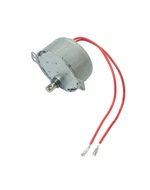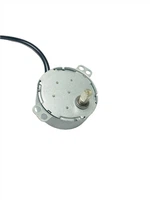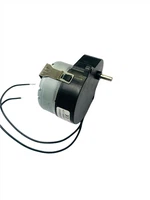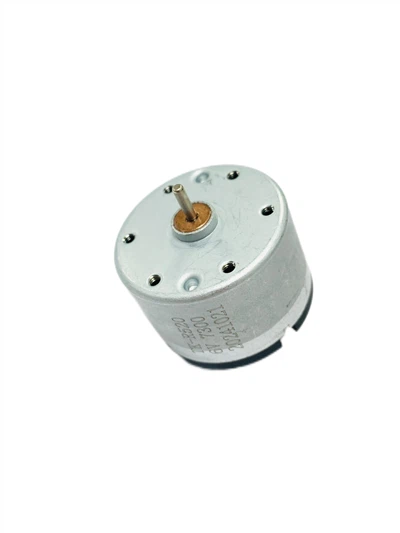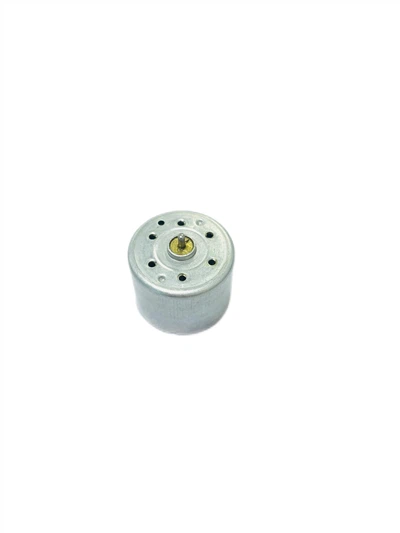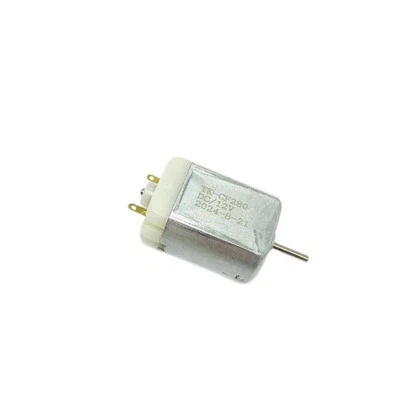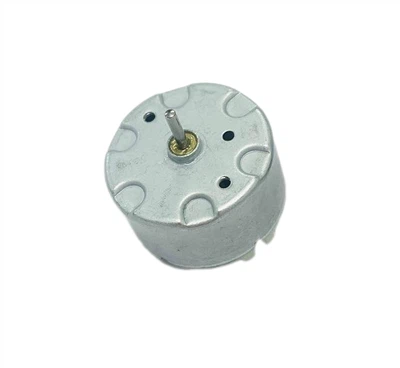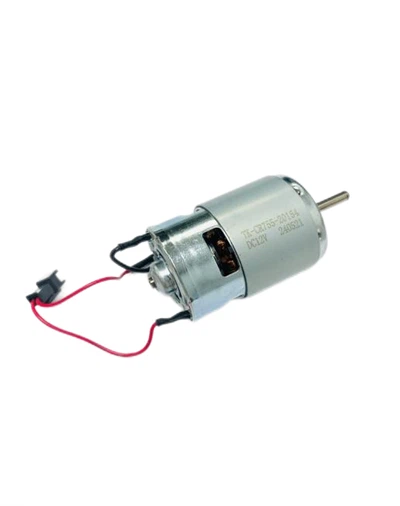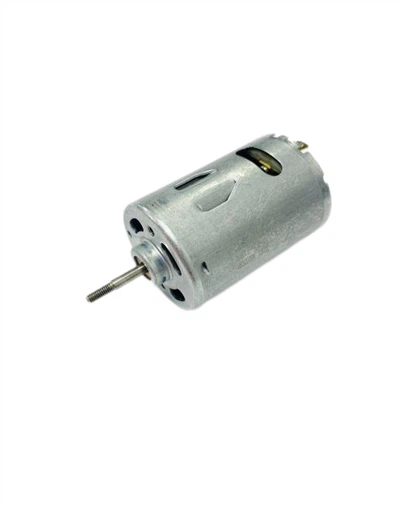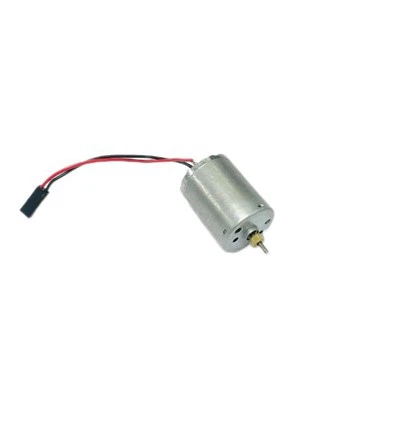Mini DC Motor
Why Choose Us
Our certifications
The Taiwan factory of our company has passed the ISO9002 international quality system certification, the American standard UL quality certification, the European standard CE /EMC quality certification, and the RoHs environmental protection certification.
Have import and export rights
The domestic company has the right to import and export, and its products are exported to more than 30 countries, and it provides the most suitable motors and related technologies according to the different needs of customers.
Our products
Our company produces synchronous motors, bidirectional synchronous motors, hysteresis motors (HTS), sparrow machine motors, and powder metallurgy gears. DC brushless motors, planetary geared motors (LED UV), push rod motors, DC motors, DC geared motors, high self-made products, and continuously improve equipment quality production management to achieve more rapid and flexible services.
Our service
In order to meet customer requirements for product diversification, the company also imports Japanese Mabuchi motors as an agent, and 100% of the goods are picked up by Mabuchi warehouses, and can be delivered in Hong Kong and domestically.
Small DC motors are used in tools, toys, and appliances. The universal motor, a lightweight brushed motor used for portable power tools and appliances can operate on direct current and alternating current.A DC motor is an electrical machine that converts electrical energy into mechanical energy. In a DC motor, the input electrical energy is the direct current which is transformed into the mechanical rotation.
Good Speed Control
Mini DC motors offer highly controllable speed. By changing the armature or field voltage it's possible to achieve wide speed variation and with this level of controllability, DC motors offer the precision required by a wide range of industry applications.
High Torque
A Mini DC motor also offers a high starting torque, which makes it perfect for use in applications that are designed to move heavier loads, such as wiper systems and in industrial automation applications, such as conveyor systems or materials handling equipment. The consistent drive power that DC motors deliver means they're ideal for maintaining a constant torque whilst an application is in use, making them an excellent choice for a geared motor solution.
Seamless Operation
As Mini DC motors operate with high levels of controllable power across a range of speeds, they offer the benefit of seamless operation. In some industries, it is vital that Mini DC motors can start and stop efficiently to cope with the requirements of the application. If you are looking for a solution that offers rapid acceleration, an option to reverse direction and start/stop efficiency, a Mini DC motor is a good choice.
Free From Harmonics
In any electric power system, a harmonic is a voltage or current at a multiple of the fundamental frequency of the system, typically produced by the action of non-linear loads such as rectifiers or saturated magnetic devices. Harmonic frequencies in the power grid can be the cause of power quality problems and harmonics in some AC motors can cause torque pulsations, resulting in a decrease in torque. DC motors are free from issues associated with harmonics.
Types of Mini DC Motor
Brushed DC Motor
The magnetic field in a brush DC motor is produced by current sent through a commutator and brush that are connected to the rotor. Brushes are made of carbon and can be separately excited or self excited. The stator is the enclosure that contains the components of the motor and contains the magnetic field. The winding of the coil on the rotor can be in a series or parallel to form either a series wound DC motor or shunt wound DC motor.
Separately Excited DC Motor
In a separately excited DC motor, the motor has separate electrical supplies to the armature winding and field winding, which are electrically separate from each other. The operations of the armature current and field current do not interfere with each other‘s actions, but the input power is their total sum.
Permanent Magnet DC Motor
A permanent magnet DC motor has an armature winding but does not have a field winding. The permanent magnet is mounted on the inner surface of the stator core to produce the magnetic field. It has a regular armature consisting of a commutator and brushes.Permanent magnet DC motors are smaller and less expensive. They use rare earth magnets such as samarium cobalt or neodymium iron boron.
Self Excited DC Motor
In self excited DC motors, the field and armature windings are connected and have a single supply source. The connections are parallel or series with parallel made as shunt wound while the series version is series wound.
Application of Mini DC Motor
Electric Vehicles
Brushed mini DC motors are used in electric vehicles for retracting and positioning electrically powered windows. Since brushed motors tend to wear out rapidly, many electric vehicle applications use brushless motors due to their long life span and noiselessness. Brushless mini DC motors are used for windshield wipers and CD players. All of the recent hybrid electric vehicles depend on brushless mini DC motors.
Cranes
In applications with overhauling loads, it is important for the motor to have the ability to hold a full load at zero speed where mechanical brakes may not be required. In those situations, mini DC motors are the most cost effective and safest option. A major benefit of their use is their size and weight.
Conveyor Systems
Conveyor systems require constant speed and high torque, which makes mini DC motors an ideal option. As has been found with other applications, mini DC motors have high torque at start up and even consistent speed. Brushless mini DC motors are the most commonly used for conveyor applications. They are noiseless and can be easily controlled, a major requirement for conveying systems.
Ceiling Fans
Ceiling fans made with mini DC motors have become extremely popular. They use less power and have a rapid start up torque. The alternating current in a home or office is easily converted to DC power by a transformer, an effect that decreases the amount of power required by the fan. As with other DC motor applications, brushless DC motors are most commonly used in ceiling fans.
Pump Drives
Mini DC motors have been the main driving force behind pumps for several decades because of their variable speed control, simple control system, high starting torque, and good transient response. For many years, pumping systems depended on brushed DC motors as their primary source of energy. The development of permanent magnet DC motors and brushless mini DC motors have offered a more beneficial option for pump system operations.
Elevators
In high speed elevators, AC motors are impractical due to their difficulty decelerating and accurately leveling with the floor. These problems are overcome with mini DC motors because they allow for infinite control of their speed by varying the current supplied to the armature. As with ceiling fans, the operation of a DC motor for elevators depends on changing the incoming AC current to DC current through the use of a transformer.
Components of Mini DC Motor
Armature or Rotor
The armature of a DC motor is a cylinder of magnetic laminations that are insulated from one another. The armature is perpendicular to the axis of the cylinder. The armature is a rotating part that rotates on its axis and is separated from the field coil by an air gap.
Field Coil or Stator
A DC motor field coil is a non-moving part on which winding is wound to produce a magnetic field. This electro-magnet has a cylindrical cavity between its poles.
Commutator
The commutator of a DC motor is a cylindrical structure that is made of copper segments stacked together but insulated from each other using mica. The primary function of a commutator is to supply electrical current to the armature winding.
Brushes
The brushes of a DC motor are made with graphite and carbon structure. These brushes conduct electric current from the external circuit to the rotating commutator. Hence, we come to understand that the commutator and the brush unit are concerned with transmitting the power from the static electrical circuit to the mechanically rotating region or the rotor.
Determine Your Speed, Torque and Voltage First
The three main specifications you will need to know for any DC motor application are voltage, speed and torque. Once these aspects are determined, you are now ready to get started on your journey to select the ideal motor solution. The key is to use a motor that is operating at or near its maximum efficiency.Motor voltage should also be defined at the start of the motor selection process. Motor voltage will be determined by your electrical power source, for example a 12-Volt battery or power supply.The nominal voltage for DC motors is typically either 12 or 24VDC.
Balance Size vs. Performance
Proper motor size is important for every application but it can become an issue if a certain performance is required. Typically, larger motors are more powerful than their smaller counterparts. Depending on your application requirements, you may have to sacrifice certain performance characteristics to help accommodate the size constraints.By utilizing different types of motors and motor technologies, like brushless motors or motors with permanent magnets, there are endless possibilities to help meet the size constraints for the majority of applications.


Gear Motors Offer More Torque
Sometimes you need more torque than is physically possible to get out of a standard DC motor. Utilizing a DC gear motor will result in increased torque and reduced speed, which is all dependent on the gear ratio that is used. There are 3 basic types of gear motors: Spur gear motors, planetary gear motors, and worm gear motors. Each gearhead type has its own distinct advantages.You can add a gearhead to stepper motors, brushless DC motors, as well as brushed DC motors. To learn more about the distinct differences between the different gear motor types, check out our design note: Planetary Gear Motors Vs. Spur Gear Motors.
Define your Duty Cycle
Your duty cycle will dictate which motor type is best for your application or device. Operating times and dwell times, as well as directional rotation, are key aspects of your duty cycle. The duty cycle should be defined at the beginning of the motor selection process.Intermittent duty cycles are encouraged for most industrial applications to help extend the useful life of a motor or gear motor. Continuous use is still acceptable but you need to make sure the motor is operating at its peak efficiency.
Mini DC Motor Working
Imagine that a current-free conductor (which is not connected to the supply) is placed in the main magnetic field the and without the magnetic field flowing through the conductor. Assume, there is an air gap from N pole to S pole.Current is flowing in the conductor but the magnetic effect of N pole and S pole has been removed. In this situation the conductor will maintain its own magnetic field. The magnetic field lines of force of the conductor will be clockwise according to the cork screw rule.
Current is flowing in the conductor and main magnetic field is also present. The magnetic field produced due to the current in the conductor acts along with the main field above the conductor but opposes the main field below the conductor. The result is that flux accumulates in the region above the conductor and flux density reduces in the region below.
From this it is clear that when the force is acting on the conductor, it works to push the conductor downwards. If the direction of current in the conductor is changed, the flux will accumulate downwards and will try to move the conductor upwards.
How to Maintain Mini DC Motor
Dust, dirt, and debris can wreak havoc on a motor. A clogged ventilation system can lead to overheating, while grime buildup on windings can disrupt electrical flow. Incorporating basic cleaning procedures into routine maintenance can significantly improve motor function and lifespan. Regularly remove dust and debris from the motor housing and ventilation system using a dry cloth or compressed air from a safe distance. For stubborn grime buildup, consider a professional cleaning service.
While some motors are self-lubricating, others rely on periodic lubrication to keep bearings functioning smoothly. But over-lubrication can be just as detrimental as under-lubrication, so consult your motor's manual for specific lubrication instructions, paying close attention to lubricant type and frequency.
Even with proper maintenance, motors can show signs of distress. Abnormal noises like grinding, screeching, or excessive vibration are all indicators of potential bearing problems. Operating temperature is also a factor. A hot motor is a stressed motor. Check for proper ventilation and have it inspected if the motor consistently runs excessively hot. And if your motor is struggling to maintain speed or output, it could be a sign of internal wear or electrical issues.
Proactively monitor your motor's performance to identify potential issues before they become major problems. Regularly take readings of motor parameters like vibration levels, operating temperature, and current draw. Keep a log of these readings to track trends over time, looking for any significant changes or deviations from normal operating parameters. Investigate any anomalies to identify potential root causes before they lead to a breakdown.
Our Factory
Shenzhen Songgang Technology Industrial Co., Ltd. is a branch of Songgang International Group, headquartered in Hong Kong. It is a factory specializing in the production of various types of motors. There are factories in Taiwan and China to produce different types of motors.The Taiwan factory is the only metal gear synchronous motor professional manufacturer, adhering to the highest service level and best quality performance, serving domestic and foreign manufacturers. The domestic company has the right to import and export, and its products are exported to more than 30 countries, and it provides the most suitable motors and related technologies according to the different needs of customers.

certificate


